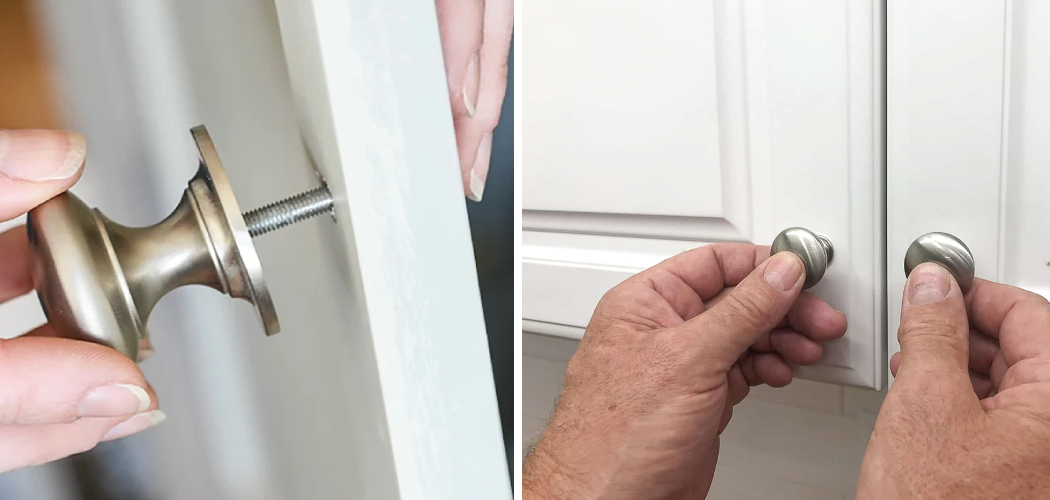Locking cabinet doors with knobs is a simple yet effective way to enhance the security of your cabinets while ensuring the safety of valuable or sensitive items inside. Whether you’re safeguarding your kitchen cabinets, office storage, or any other cabinetry, understanding how to properly lock cabinet doors with knobs is essential. In this comprehensive guide, we will explore the steps and techniques required how to lock cabinet doors with knobs.
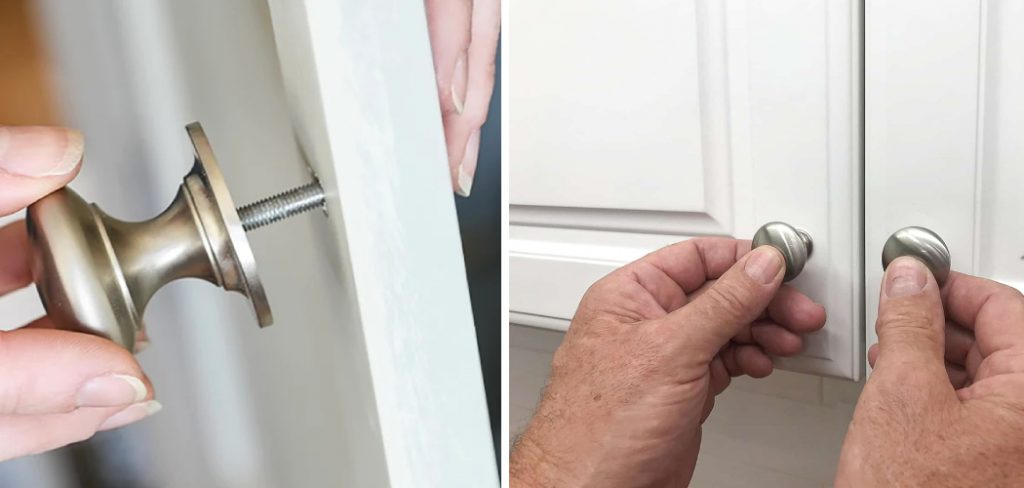
Knob-based locks are a popular choice due to their ease of installation and use. Whether you’re a homeowner looking to protect your family’s privacy or a business owner safeguarding confidential documents, this article will provide you with the knowledge and step-by-step instructions to lock your cabinet doors effectively. Join us as we delve into the art of securing your cabinets with knobs, ensuring your peace of mind and the protection of your belongings.
The Importance of Locking Cabinet Doors with Knobs
When it comes to the security of your home, it’s important to take all necessary precautions. One of the most effective measures you can take is to install locking cabinet knobs or handles on all your cabinetry.
This will ensure that your valuables and firearms are stored securely and can’t be accessed by anyone other than yourself. Locking cabinet knobs and handles are easy to install and provide an extra level of peace of mind.
Installing locking cabinet knobs is a simple process, but it’s important to take the time to get it right. If you don’t properly install the knob or handle, it won’t be secure enough to keep out any determined intruders. For the best results, it’s recommended that you hire a professional locksmith to install your chosen knob or handle.
When selecting a locking cabinet knob or handle, look for one with an anti-drill feature. This will help protect your handles and knobs from being drilled out by intruders trying to gain access to your cabinets. Additionally, make sure that the knob or handle is designed to fit your cabinet door. This will ensure it fits securely and won’t come loose over time.
The Different Methods to Lock Cabinet Doors
When it comes to locking cabinet doors, there are several methods you can use. Depending on your needs and preferences, you may opt for knobs, cam locks or latches.
Knobs are one of the most popular options when it comes to locking cabinet doors. They’re easy to install and provide a secure way to keep the contents of your cabinets safe. Knob locks typically come with two pieces: a base knob and a locking mechanism. Once the knob is tightened, it will lock in place and create a secure barrier between your cabinets and any potential intruders.
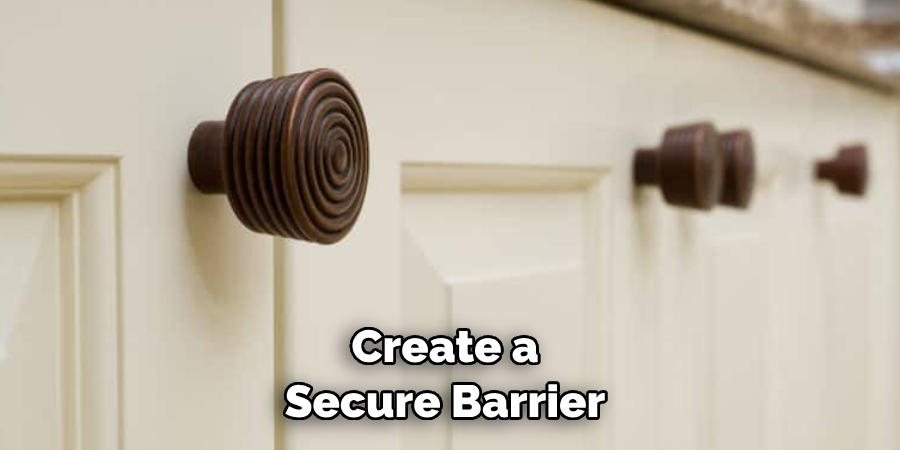
Cam locks are another common option for locking cabinet doors. They offer a higher level of security than knobs because they require the use of a key to open the lock. The locking mechanism is a rotating cylinder that is inserted into the hole in the door and then rotated until it clicks and secures the cabinet shut.
Finally, latches are another option for locking your cabinets doors. Latches are metal or plastic bars that slide down onto a notch in the side of your cabinet door when you close it. They are typically easy to install and provide an added layer of security for your cabinets.
10 Steps How to Lock Cabinet Doors with Knobs
Step 1: Gather Your Materials and Tools
Before embarking on the installation process, it’s crucial to have all the necessary materials and tools at your disposal. Gather the following items:
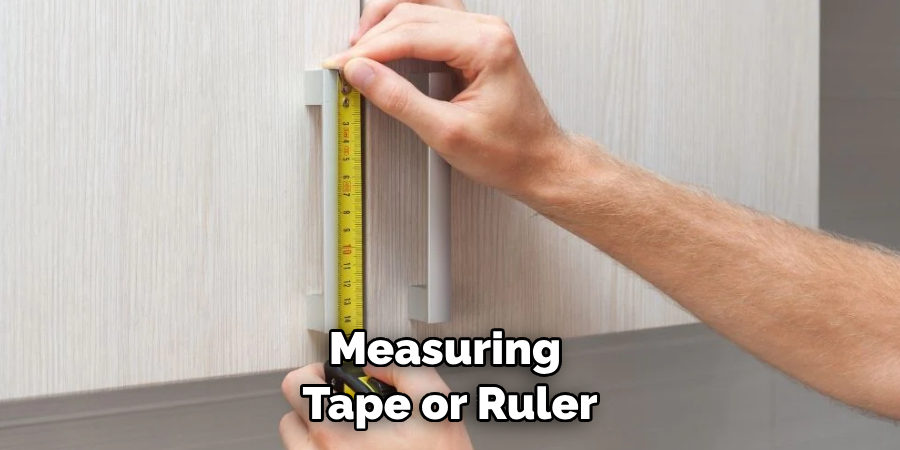
- Cabinet knobs with locks (either pre-purchased or those intended for installation).
- A screwdriver, typically a Phillips or flathead, depending on the type of screws.
- A measuring tape or ruler for precise measurements.
- A pencil or marker for marking the knob placement.
- A drill (optional, for the installation of new knobs).
- Appropriate screws or bolts, if they are not included with the knobs.
- A level (optional but helpful for ensuring precise alignment during installation).
- A well-organized workspace with adequate lighting is essential for a smooth installation process.
Step 2: Assess Your Cabinet Doors
Begin by carefully assessing your cabinet doors to determine their current state. Determine if they already have knobs with built-in locks or if you need to install new ones. If you’re replacing existing knobs, pay close attention to the alignment of the new knobs with the old holes to ensure they match. This assessment will guide your decisions regarding new knob placement.
Step 3: Choose the Right Knobs
Selecting the appropriate knobs is a critical decision, encompassing considerations of style, size, and functionality. Ensure that the knobs you choose come with built-in locks or are compatible with lock inserts if you plan to add locking mechanisms separately.
Step 4: Measure and Mark Knob Placement
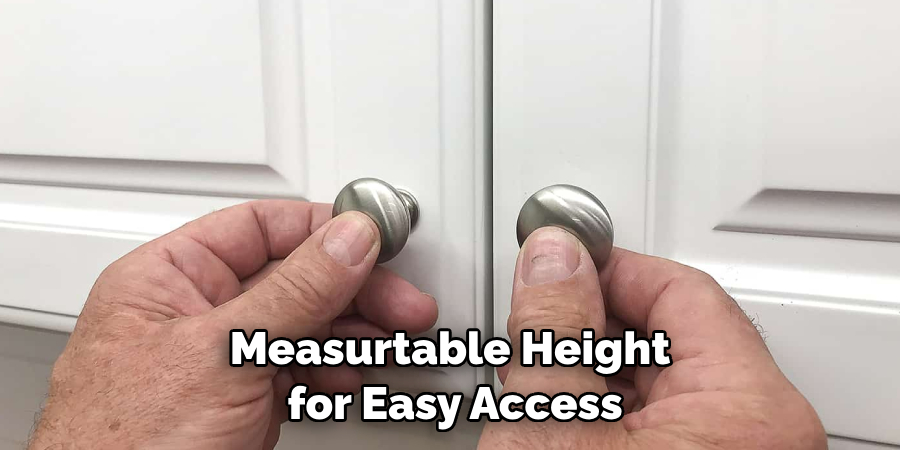
Precise measurement and marking are essential to achieve an aesthetically pleasing and functional result. Utilize a measuring tape or ruler to determine the ideal placement for your knobs. Ensure they are positioned symmetrically and at a comfortable height for easy access. Use a pencil or marker to mark the exact center point on the cabinet door where each knob will be installed.
Step 5: Drill Holes for New Knobs (If Necessary)
If you’re installing new knobs or if the existing holes don’t align with the new knobs, you may need to create new holes. Utilize a drill with a bit that matches the screw size of the knobs. When drilling, exercise caution and maintain the correct depth and angle to prevent splintering or any damage to the cabinet door.
Step 6: Attach Knobs to the Doors
With the holes drilled or the existing holes matched, proceed to attach the knobs to the cabinet doors. Secure the knobs by screwing or bolting them in place, using the appropriate screwdriver. It’s crucial to ensure that they are snug but not overly tightened to avoid damaging either the cabinet door or the knob. For knobs that have lock inserts, insert them following the manufacturer’s provided instructions.
Step 7: Test the Locks
It’s essential to verify the functionality of the locks on the knobs. Test the locks by inserting the provided key or manipulating the lock mechanism, depending on the type of lock. Ensure that the lock engages and disengages smoothly and reliably.
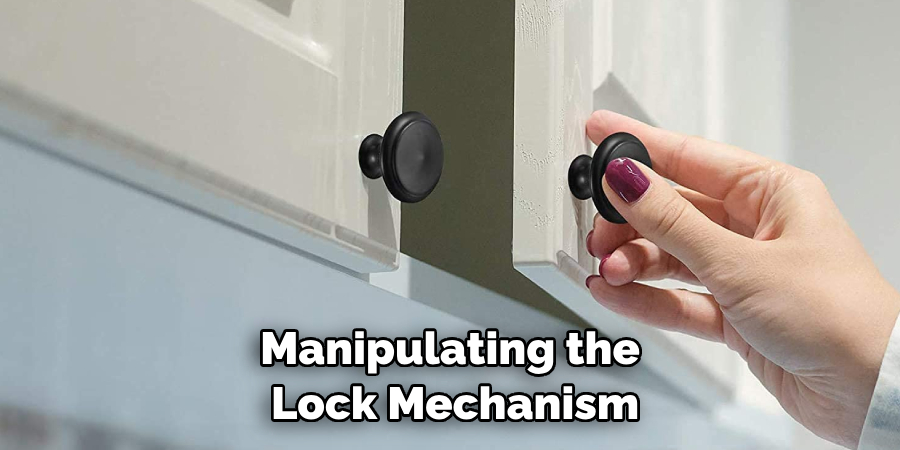
Step 8: Create a Key Management System
If your knobs come with keys, establishing a well-organized key management system is essential. Consider using labeled key rings or a dedicated key holder near the cabinet. This ensures that keys are easily accessible to authorized individuals while preventing unauthorized access.
Step 9: Duplicate Keys (Optional)
For added convenience and security, consider duplicating keys for the cabinet locks. This is especially valuable if the knobs come with unique lock mechanisms. Store duplicate keys in a safe and easily accessible location in case the original key is lost or misplaced. Having a spare key readily available can save you from potential hassles.
Step 10: Educate Household Members or Employees
Finally, it’s crucial to educate household members or employees about the newly installed cabinet locks. Explain how the locks work and emphasize the importance of keeping keys secure. Encourage responsible use of the locks to maintain both security and accessibility. Clear communication ensures that everyone understands the purpose and operation of the locks, reducing the likelihood of mishaps or misunderstandings.
Things to Consider When Lock in Cabinet Doors with Knobs
When it comes to locking cabinet doors with knobs, there are a few key points you should keep in mind.
First and foremost, consider the type of knob that you’ll be using for your cabinet door. Most locks require a specific style of knob that is designed to fit into the latch mechanism. If you choose a knob without this feature, it will not be as secure.
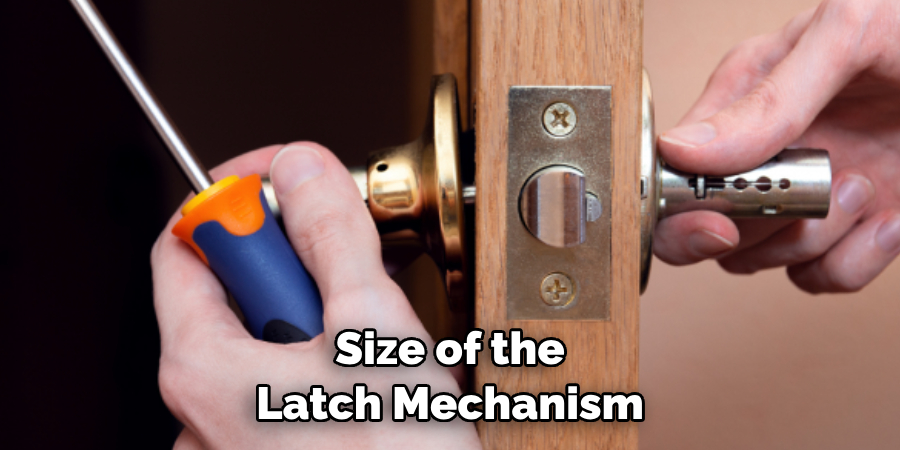
Another factor to keep in mind is the size of the latch mechanism. Most knobs come with a certain size opening that must fit into the latch, so pay attention to this detail when selecting your knob type.
Finally, make sure that you select a knob with an appropriate locking mechanism. There are several types of locks available, so you should be sure to pick one that will work well with the kind of cabinet door you have.
Overall, when it comes to locking cabinet doors with knobs, make sure that you consider these points before choosing a knob type and locking mechanism. Doing so will ensure that your cabinets stay secure and locked for years to come.
Conclusion
Knobs are a great way to secure your cabinet doors and keep important items out of reach. With just a few simple tools, you can lock your cabinet doors in no time! Taking the time to learn how to lock cabinet doors with knobs is a worthwhile investment, as it will help keep belongings safe and offer peace of mind for many years to come.
Don’t wait any longer – take action today and go lock those cabinet doors! You’ll be so glad that you did when you know your things are safeguarded from curious hands. Who knows? You might even find that it’s easier than you thought!

